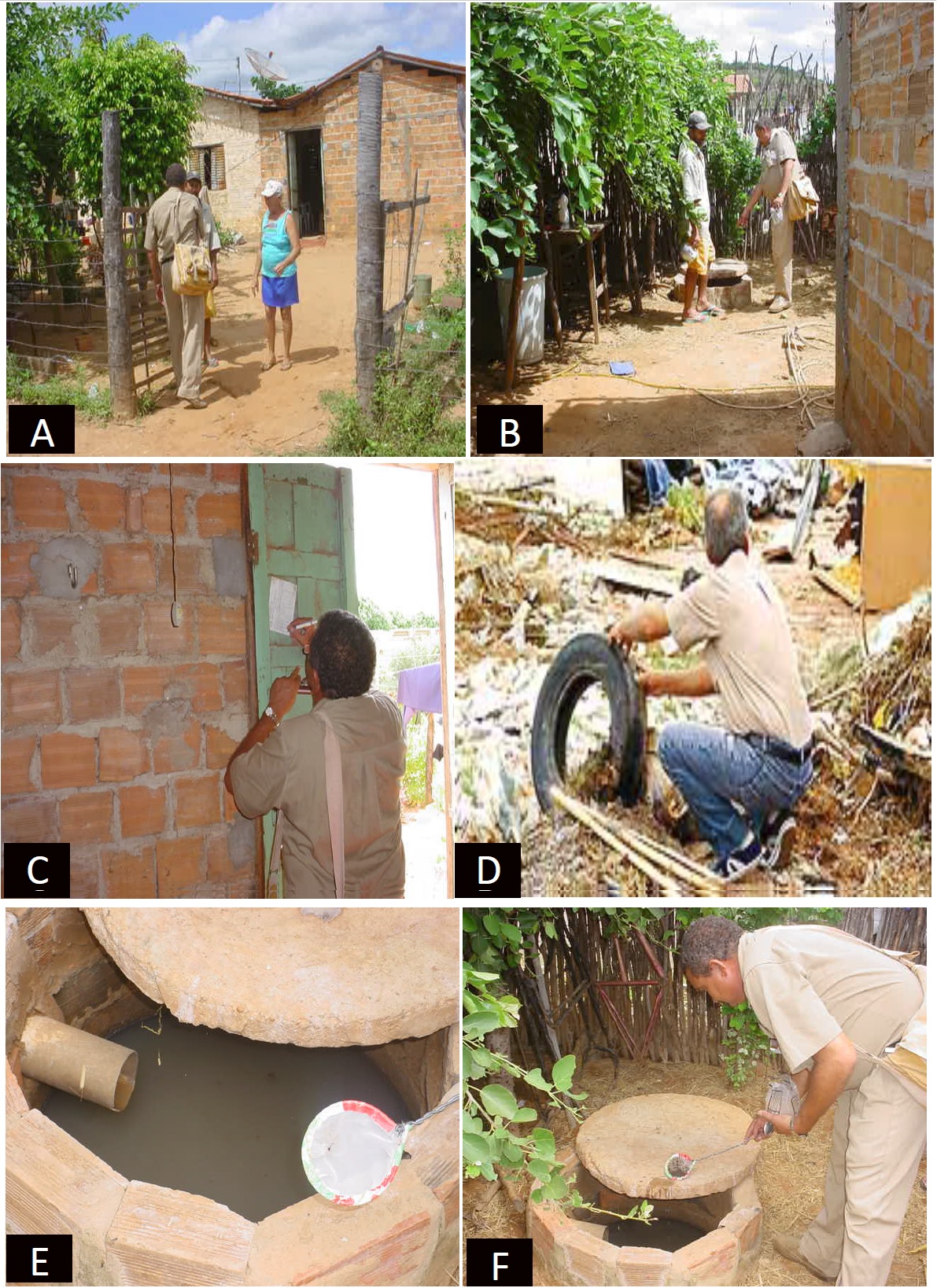Abstract
Two-thirds of the world population live in areas infested with dengue vector mosquitoes, especially Aedes aegypti. This study conducted a survey about dengue cases in Picos (Piauí, Brazil) between 2007 and 2011, emphasizing some transmission factors. Data were collected in the Health Secretary and Municipal Zoonoses Center and in SISFAD Programme (Information System of the National Dengue Control Program). During 2007, 2008, 2009, 2010 and 2011, a total of 116,301; 181,892; 187,619 and 195,377 properties, respectively, were visited by endemic control agents, and presented higher rates of outbreaks for A. aegypti larvae (p<0.05). Among the inspected places, larvae were predominant in lowered (storage tanks) and raised (water tanks) water reservoirs. Serological tests confirmed a total of 85, 117, 221, 296 and 217 cases in 2007, 2008, 2009, 2010 and 2011 and the average number of cases was higher in patients between 20-34 years-old) (p<0.05). In 2011 it was identified, for the first time, Aedes albopictus spots, mainly in storage tanks. Therefore, the number of cases is increasing, suggesting that the transmission vector control may suffer a strong impact by surveillance action based on community contribution, since peri- or household water tanks represented the predominant sites for vectors reproduction.
Keywords:
Aedes aegypti; vector control; infestation rate

 Thumbnail
Thumbnail
